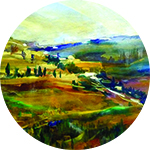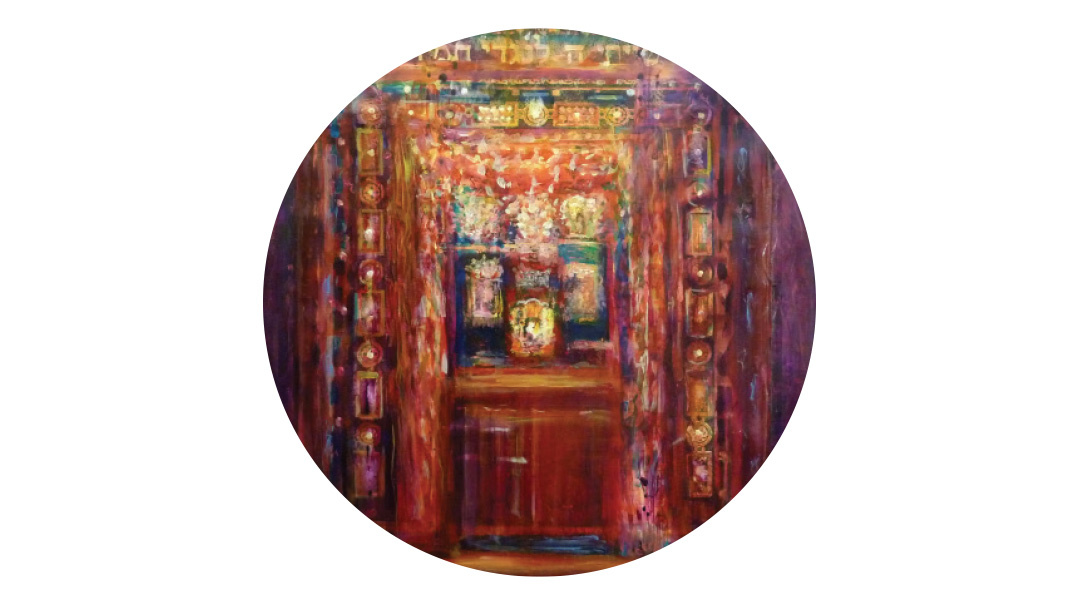Scale Past Stagnation


Make life’s busyness meaningful by reflecting on the why
The Yom Tov roller coaster has come to a screeching halt, and we need to reembark on the humdrum carousel of regular life.
The month of Elul marked the beginning of a period of pensive soul-searching, which reached its climax on Yom Kippur, and culminated in the exultant dance of Simchas Torah. The time of reflection and joyous celebration has ended, to be replaced by the routine cycle of school, work, appointments, shopping, cooking, and laundry. Next year’s Elul is a distant dream.
Yet often, when that next Elul does arrive, it brings with it bitter disappointment in ourselves. It’s all too easy to blame that on the typical distractions of our busy lives, to point the finger at day-to-day routine for leading to stagnation.
Be a Head
When it comes to serving Hashem, there is no such thing as stagnation. Avodas Hashem is never static. A lack of flow is not the absence of growth; it is actually a negative flow, the lack of growth causing a person’s spiritual size to recede.
It was not so long ago that we courageously took that bite of the head of a fish (or possibly a lamb) and asked Hashem to make us a “head and not tail.” This Rosh Hashanah siman is based on a pasuk in parshas Ki Savo (28:13): “And Hashem will make you a head and not a tail.”
Rav Shimshon Pincus (Tiferes Shimshon) asks somewhat cynically: “What’s so bad about being a tail? Doesn’t it end up wherever the head goes?”
Rav Pincus explains that the tail has no drive or intelligence to account for its arrival at its destination. It’s merely a “blind follower.” Similarly, if a person completes her actions and service of Hashem as a “tail,” merely performing lip service with no conscious drive or thought impelling her actions, there’s practically no value to her righteousness.
Being a leader does not require the charisma and drive of somebody who naturally gravitates to the podium. Being a leader is internal; it’s completely dependent on our being the “head” of ourselves.
We are all products of our environment and the life circumstances in which we grew up, and we don’t always have the forethought to realize that we need to stop and think: “Who am I? What am I doing?”
All too often, our “head” is actually a friend, a neighbor — or even merely what we call “yesterday.” One of the best devices of our yetzer hara is to overwhelm us with busyness, distracting us from focusing on what life is all about.
The Opiate of Hergel
In Birchos Krias Shema of Maariv we say, “We will be happy with the words of Your Torah and mitzvos forever, because they are our lives.”
Are we in fact happy? Is this the joy that fills our lives? The Torah chastises us not for lack of service but for “service without a smile.” The Jew is punished for not serving Hashem “with happiness and a gladdened heart.”
We may think of our lives as filled with the various dirges of the daily routine, but they can also be filled with the happy tunes of our mitzvos. The magnificence of the structure of our 613 mitzvos is that they are interwoven with every detail of our existence. They are so very versatile that they apply in every extreme life circumstance — and also to a typical 24-hour day.
Rav Elya Lopian (Lev Eliyahu Ki Savo) describes a young child who is taught that he won’t get to play until after he learns. The young child soon becomes the young adult who knows that he must attend minyan before he can go to the ball game with friends. This attitude can thus become one that carries the young boy throughout his life: the perception that mitzvos are simply necessary chores that must be completed so that he can experience life’s pleasures, Rachmana litzlan.
Rav Lopian draws a parallel between this young child and animals that are trained to perform tasks before receiving their treats, noting that even horses can be trained to dance to music. (I’ve yet to see one, but it must be fascinating.)
Rav Lopian asks, “A person, who is the pinnacle of Hashem’s creations, the only being who can choose between good and evil, will do things only because of hergel, like an animal! What, then, makes humans any better?”
Hergel, habit, is an opiate that can transform the Divine service, with its inherent excitement and freshness, into a dull, tedious, compulsory exercise. Hergel is “We just do it that way,” or “This is what I’m used to.” And thanks to this hergel, once the primacy of the mitzvos has been dimmed in our eyes, our desire for money, food, or power will grow out of proportion. The desire for the “Torah and mitzvos that are our lives” becomes relegated to days like Rosh Hashanah and Yom Kippur, and quickly squashed in the complacency of Cheshvan.
Recharge with Reflection
How can we recharge our spiritual batteries? We must plug back in to our free will, we must take the time to think, listen, and search for what will inspire us.
As it says in Aleinu, “And you will know today and bring it back to your heart” (Devarim 4:39). Rav Shamshon Raphael Hirsh explains that “bring it back” means engaging in an exercise of self-reflection.
The mother rushing to and from car pools can think, I am taking my children to learn Hashem’s Torah. The daughter whose elderly mother needs constant care and attention can maintain her focus: It is my zechus to keep the mitzvah of kibbud eim — I’m so fortunate to still have a mother.
The woman who runs to work after completing the crazy morning marathon should remember, How lucky I am to have a fulfilling job. My opportunity to cover the cost of living brings my family more menuchas hanefesh. And the woman who finds herself constantly lending her “tzuflugene” neighbor all of her missing ingredients can strengthen herself by thinking, How happy I am to help and bring her home some taam of Shabbos.”
Bringing things back to your heart takes creative thinking and positive perspectives — but it’s the force that propels one who wants to grow and change to do so.
Preparing to Climb the Mountain
My husband loves to quote the following question, asked by his mashgiach, Rav Moshe Eisenman shlita: “Why did Lot’s wife turn into a pillar of salt? Why not a salt shaker or a marble pillar?”
Salt is a preservative. Its function is to maintain the status quo of whatever it’s coating. A pillar is immobile; it will be resistant to budging. Lot’s wife represents one who refuses to embrace change and yearns to maintain the status quo. She wants to stay in Sedom because she loves its entertainment, styles, food, and clothing. Though she knows it’s ultimately doomed, she cannot bear to leave. Even when fleeing the city, she turned back to cast one look at it; she yearned for its materialism and spiritual stagnation.
Our new year has started. The next 11 months loom before us like a towering mountain. As we prepare to climb it, let’s bear in mind Rav Yosef Breuer’s commentary (A Unique Perspective — Rav Breuer’s Essays) on the timeless question of Dovid Hamelech (Tehillim 24:3) “Who will go up on the mountain of Hashem?”
It will be the person who is not afraid to climb. The person who embraces challenge with joy. She knows that she may fall at times, but she’ll get up with pride. She knows that spiritual growth is not a race to the top — it’s a steady and meaningful journey.
Wishing you a safe climb!
Originally featured in Family First, Issue 612. Rebbetzin Aviva Feiner is the rebbetzin of Congregation Kneseth Israel (The White Shul), and menaheles of Machon Basya Rachel Seminary, both in Far Rockaway, New York.
Oops! We could not locate your form.







